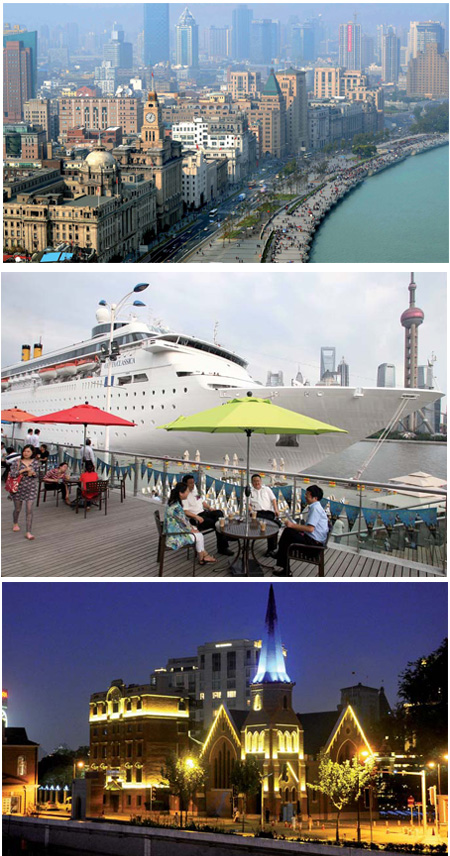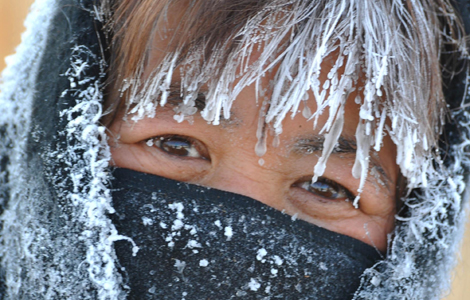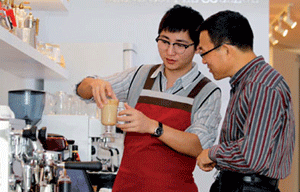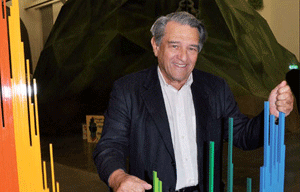The brilliant bund
Updated: 2011-12-02 09:08
By Shi Yingying (China Daily)
|
|||||||||
|
Top: A bird's-eye view of the Bund in Shanghai. Wang Song / Xinhua. Above: A Costa cruise ship on the Huangpu River. Provided to China Daily. Below: A night view of a renovated building at the northern end of the Bund. The Bund, through years of makeover efforts, is becoming a place that blends history, luxury and culture. Yang Yi / for China Daily |
A makeover that enhances the old and brings in the new is an irresistible magnet for tourists in Shanghai
Anyone who is away from Shanghai for five years or more is likely to be surprised on seeing the city's most famous location when they return. Of course, the Bund, as ever, teems with tourists strolling along the riverfront and posing for photos with the Oriental Pearl Tower in the background, but the 2-kilometer stretch along the Huangpu River is beginning to throw up tantalizing new treats as a makeover that has been years in the making continues. Beyond being a tourist attraction, the Bund is being turned into a magnet for the wealthy.
Three on the Bund, the renowned 95-year-old Union Building on the corner of the Bund and Guangdong Road, has been transformed by the American architect Michael Graves and now radiates swish opulence. Its tenants include Evian Spa, (massages up to 5,000 yuan, that is $785 or 590 euros), and an Armani flagship store.
On the other side of Three on the Bund, M on the Bund and Glamour Bar, among the first high-end establishments to open on the Bund, are packed most nights, and it is obvious why: they offer views as delightful to the eye as the food and cocktails are to the mouth.
At Bund 18, a relative latecomer, the keyword is also luxury, and names like Cartier and Zegna are to the fore.
"A lot of our tenants look at the Bund as a window to the world," says Sylvia Lee, chief marketing officer for Bund 19 Real Estate Development Ltd. "Investment from overseas has always been interested in getting a piece of the Bund."
Now, it seems, they are getting their wish.
When Bund 18 was being planned about 10 years ago, the local government insisted that some of its space be devoted to the riverfront's long-time industry of banking. But with Shanghai Expo came a change of heart.
"They reconsidered some of the arrangements along the Bund and got leisure and tourism into the area in addition to banking," Lee says.
Developers say that in bringing luxury destinations to the Bund they are simply heeding the wishes of the government.
"They are targeting it to be a higher-spending area as opposed to middle-market areas like East Nanjing Road," Lee says. "We're just following the trend."
Three on the Bund and Bund 18 are not alone in heeding the siren call to reshape the area so that it embraces and blends tourism, residential buildings, business and recreation.
RockBund, at the northern end of the Bund, at the confluence of the Huangpu River and Suzhou Creek, is the next big thing. Spread over 94,000 square meters, 11 historic buildings are being restored, and there will be four new buildings.
RockBund is taking after Three on the Bund and Bund 18 by installing luxury retail tenants on the ground floor, serviced apartments and shops in the middle and fine-dining restaurants with panoramic views on the top. The first stage is expected to be completed by 2014.
"The first stage includes renovating these old buildings, each in its unique architectural style, and finding ideal tenants for them," says Eva Huang, senior marketing manager of Shanghai Bund de Rockfeller Group Master Development Co Ltd, the company in charge of the RockBund project.
It is clear that these shops, restaurants and offices will cater to the high-end market. Huang says the developer spent 40 million yuan on one of the 11 old buildings to convert it into an art museum, expecting that it would increase the value of nearby real estate in five years time. The museum is already open.
The World Expo last year, which brought 73 million visitors to Shanghai, has given the city's tourism a lasting fillip, and hoteliers on the Bund have been busy ever since.
"I first lived in Shanghai in the early 1990s, when Pudong was distant and desolate," says Margie Chiang, 42, a Chinese American working in Shanghai.
"There was no skyline to stare at from the Bund, only swampland. When Glamour Bar first opened, the shape of the Pudong skyline was beginning to surface. So it was from Glamour Bar that I witnessed Pudong go up."
Chiang says her first stop after returning to Shanghai from the US was Glamour Bar. "Ten years later it was unbelievable: a bold and captivating skyline that still takes my breath away."
When many people think of Shanghai the first pictures that come to their mind are of the Oriental Pearl Tower and of the Bund, and the latter has become a hot spot for the world's top hotel brands.
Hongkong and Shanghai Hotels, controlled by the Kadoorie family in Hong Kong, opened its first Peninsula hotel on the Bund just before the Expo. The company, one of the oldest hoteliers in Asia, owned and operated four hotels in Shanghai in colonial times before World War II, all of them on or near the Bund.
"It's like a homecoming for me and the company," says Michael Kadoorie, the chairman of Hongkong and Shanghai Hotels. "We have waited patiently for about 60 years before returning to Shanghai and the Bund."
The hotel has a helicopter pad on the rooftop and a fleet of luxury vehicles, including two Rolls-Royce Phantoms, one of them a 1934 model.
Twenty-four swish retailers, including Chanel, Valentino, Giorgio Armani, Prada and Ralph Lauren, are located in the 7,000-square-meter Peninsula Arcade.
The hotel's neighbors include Fairmont Peace Hotel, Waldorf Astoria and high-end restaurants and clubs.
Peace Hotel, 82 years old, reopened last year after a three-year renovation that cost $64 million (48 million euros). The century-old No 2 on the Bund, a couple of hundred meters down the road, and which was out of use for about 10 years, has been restored to its former glory and reopened as the Waldorf Astoria Shanghai, the brand's first hotel in Asia, in April.
Siem Bierman, a Dutch businessman, says that what attracts him to the Bund is the entertainment and hospitality. He says that 80 percent of the Bund's restaurants take part in Restaurant Week, an event he promotes, in which prices at dozens of restaurants in the city are cut.
Bierman says he visits these spots once a week, no matter whether it's a wine tasting, afternoon tea at the Peninsula or dinner at Hyatt on the Bund.
"If I have guests visiting from abroad I will bring them to dine at the Bund. Here is the thing: it's somewhere local Chinese wouldn't usually try. They come for the view and leave after taking photos, but you would be able to find more international businessmen in all of these fine-dining restaurants and bars.
The Bund's high-end hospitality market has emerged in the past five years, he says. "Before you only had M on the Bund and Three on the Bund, but in the past five years, especially since the Expo, there has been a surge."
When it became clear that the Bund was bursting at the seams and could take no more luxury, the Huangpu district government came up with a plan to turn the 150-year-old Shiliupu Dock, the abandoned pier that sits at the southern end of the Bund, into a creative hub by attracting designer hotels, expensive restaurants and shops.
It is part of the three-year Bund renovation project that ended in August. Yet for older people from Shanghai, Shiliupu Dock is nothing more than a poor residential area with poor surroundings.
"The thing I can't forget about my old house is its smell," says Gu Ren, 52, who lived next to the dock for more than 10 years.
"We were next to a vegetable market, a fish market and hundreds of vendors selling groceries, so the smell was a mixture of those."
Keith Barr, managing director of InterContinental Hotels Group Greater China, reckons the dock may be perfect for the designer hotel Indigo, which has set up shop there.
"Indigo is famous for its concept of reflecting the stories of the neighborhood," Barr says. "I guess with its 150-year history, the dock has lots of great stories to tell."
Indigo established its property at Shiliupu as the first Indigo in the Asia-Pacific region a year ago. Just a few blocks away is the newly opened boutique hotel Waterhouse. Its management's philosophy on choices of location mirrors that of Indigo.
"With high-end hotels, luxury restaurants and shops fully packed on the Bund, I believe South Bund is the upcoming star for both tourists and local residents," says Anna Wang, spokeswoman for the hotel.
Both hotels are in the cool docks area, a new commercial venture offering retail outlets, restaurants and bars.












